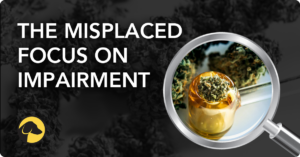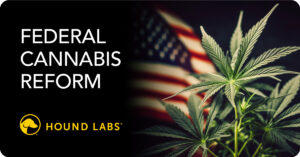
Focusing Competing Priorities When Each Workplace Leader is Right
Legalization and acceptance of cannabis is causing a unique organizational phenomenon: workplace leaders who once had a clear and united view of zero-tolerance drug testing policies are now diverting from that curated path. Each leader is facing unique challenges regarding how cannabis is affecting their department’s ability to operate at an optimum level.
These concerns vary depending on the viewpoint and responsibilities of each departmental leader. For example, human resources or staffing leaders are concerned about the tight labor market and struggle with finding enough qualified candidates if they require pre-employment testing. At the same time, a safety manager may be most concerned with mitigating risk and preserving the safety record the company has worked hard to achieve and maintain.
Still, a CEO or other C-suite executive may think, “I don’t care what employees do with their free time as long as they are productive at work.” While regulatory and compliance teams may focus on how to comply with ever-changing laws while maintaining safety and promoting for employees.
WHO IS RIGHT WHEN NO ONE IS WRONG?
While it may seem as though these viewpoints are competing, each is valid and has its own merit in the era of cannabis legalization. Industries are at a tipping point as nearly 185 million adults have legal access to cannabis. This makes zero-tolerance cannabis policies increasingly challenging to enforce without risking destabilizing a company’s workforce which may result in adverse ripple effects across an organization.
One of these ripple effects includes risking the investment made to hire, onboard, and train an employee, then later reskill or upskill them for new, additional opportunities within the organization. A drug test using conventional urine, oral fluid, and hair methods may result in a positive cannabis test due to prior use days, weeks, or even months ago. Because of the positive test and a zero-tolerance policy, the employer may be forced to terminate a highly valuable and well-trained employee and must attempt to find a replacement in a tight labor market.
To reduce ripple effects such as this, it is essential to put differing views from workplace leaders back into a clear focus. While this may not be the singular, zero-tolerance view it once was, workplace leaders can create policies and embrace modern drug testing methods to ensure the organization has the ability to operate at an optimum level.
BLENDING DIFFERENT ORGANIZATIONAL VIEWPOINTS
It is important to recognize each workplace leader’s viewpoint is valid and does have priority based on industry regulations, state laws, and the needs of the organization.
For example, to address HR’s concerns about hiring and keeping qualified candidates in the pipeline, the ability to test for recent use, not historical use, would address candidates’ testing concerns without increasing safety risks. Replacing pre-employment cannabis testing with post-hire employee testing reinforces an organization’s policy on cannabis use immediately before or during work. This approach also fits the CEO, who doesn’t care if the employee is using cannabis in their free time, off the clock, and off-site, as long as they remain safe and productive at work.
If safety managers are apprehensive about eliminating cannabis testing altogether, then don’t. As Jaime Feinberg, Vice President of Partnerships for Insurance, Risk, + Safety at Hound Labs, pointed out recently, safety managers strive to be fair and objective. However, if states and businesses must now rely on training employees to recognize impairment, objectivity will be lost. The only way to ensure objectivity is to use data provided by instrument-read tests that indicate the presence or absence of recently used cannabis.
For regulatory teams focused on how to comply with ever-changing regulations and laws and establish fair drug testing programs and policies, the most effective policies will recognize the limitations of current cannabis tests and allow employers to add new cannabis testing solutions designed for an era of legal use, according to Doug Boxer, Chief of Policy + Strategic Initiatives at Hound Labs. Employees want fair treatment, and they want to be safe. This requires objective data provided by instrument-read tests that indicate the presence or absence of recently used cannabis.
CREATING A NEW VISION TOGETHER
As more states consider cannabis initiatives in 2022, workplace leaders need to ensure their views, while different, focus on developing policies that support their organization to perform at optimum levels. With modern cannabis testing technology, risks associated with each workplace leader’s priority (respecting employee choice, reducing risk, addressing legal compliance, etc.) can be part of a singular vision for an organization and its leaders.
Both employers and drug testing service providers need to be aware of changes to state laws that may impact their drug testing policies. To learn more, check out our webinar with employment attorneys from Ogletree Deakins, “An Update on State Cannabis Laws and Trends for 2022.”

May 5, 2022
By CASEI MALONE
Share












